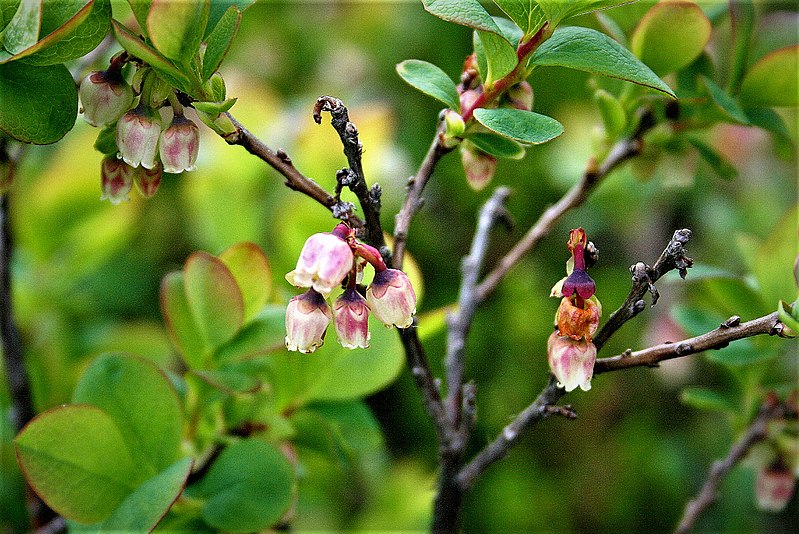Bog Blueberry Identification – Vaccinium uliginosum
Heads up
Bog Blueberry, also known as Vaccinium uliginosum, belongs to the Ericaceae family (or Heath family). The family has some common shrubs and small trees, many of which are known for their colorful and edible berries.
Bog Blueberry: Key Parts in Photos



Where to find it
This unique plant can be found in tundras and alpine thickets. Tundras are places where the soil is so cold that trees can’t grow, but small shrubs, like bog blueberry, can. Similarly, alpine thickets are areas on mountains where trees are scarce, but smaller plants thrive.
How to identify Bog Blueberry
Look for one or two nodding flowers at the tips of young twigs. These bell-like flowers are about ¼ inch long and can range in color from white to pink or almost red. If you peek inside, you’ll spot a bunch of brown stamens surrounding a white or pale green style. The outside of the flower, called the calyx, is typically hairless.
As for the leaves, they grow alternately on the stem. These leaves are simple. They are up to one inch long, and their shape can be broadly elliptical to egg-like. Their edges are smooth, and the upper side is dark green with a network of visibly embossed veins. The underside is pale green and might feel slightly hairy, especially on the veins.
The Bog Blueberry’s fruit is what gives the plant its name. The berries are round and about 1/3 inch in diameter. What makes them stand out is their waxy powdery blue coating, giving them a frosted appearance. However, in some instances, this coating might be missing, resulting in shiny bluish-black berries instead.
